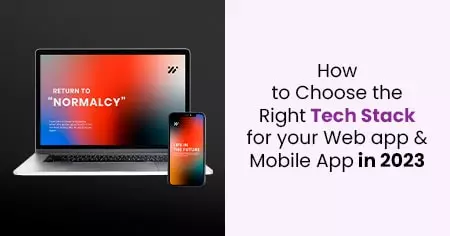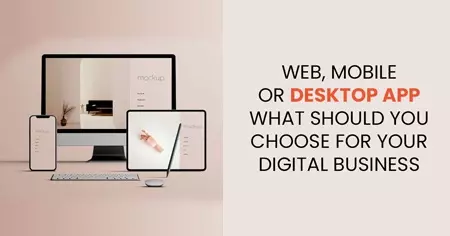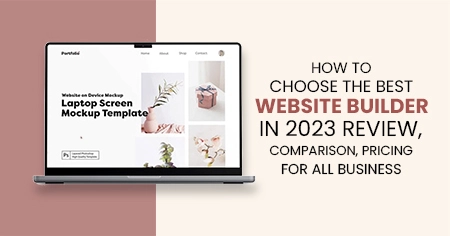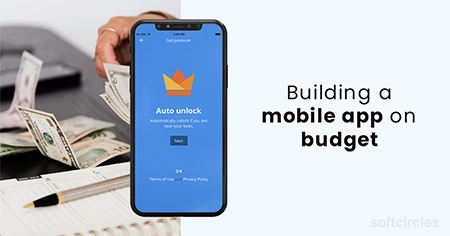The decision will typically determine whether your web and mobile applications will operate well and be extensible. It will also influence your finances! A well-chosen technology stack provides a competitive edge and aids growth, but the incorrect technology might put you back months.
In today's competitive world, having a brilliant product concept is merely the first step toward success. Product development involves planning, layout, distribution, marketing, and development; the backbone is the appropriate technology to support and expand your idea. The post will go through several tech stacks, examples, and how to pick the right technology stack to fit Agile development methodologies.
As a result, selecting the right tech stack for your app in 2023 is critical to saving time and money while offering a fantastic user experience. The article will assist you in choosing the most suitable technology stack.
What is a technological stack?
A technology stack, also called a solutions stack, is the collection of technical services, frameworks, and languages that comprise the ecology of a website, mobile app, or web app. It's called a "stack" because a technical layer is stacked on top of another. It is split into two parts: a front-end (how it appear) and a back-end development (how it functions).
Components of a tech stack
We now know that the technological stack is divided into two components. Let's disassemble each part:
Front-end tech stack (Client-side)
Since the front end is visible to the customer, it is crucial to consider beyond the surface-level design. The front end contains all of the parts that go into the visualization on the internet browser or mobile device, including the use of three programming languages:
For mobile applications:
- Xamarin
- Cordova
- Java or Kotlin for Android.
- React Native
- Objective C or Swift for iOS
For Web Applications:
- HTML
- JavaScript
- CSS
- React.js>
- Vue.js
- Angular
- jQuery
- or other JavaScript libraries and web frameworks for web apps
Front-end frameworks provide fundamental HTML, CSS, and JavaScript templates and components for developing online apps and webpages. The two popular platforms for mobile-friendly web content are Foundation and Bootstrap.
Back-end tech stack (Server-side)
The back-end tech stack is a website or app's inner workings or backbone. Back-end technology stack components include:
Server-side programming languages: This code was used to construct the program with several cross-platform and native development choices. Server-side languages may include PHP, JavaScript, Dart, Ruby, Kotlin, Swift, C#, C++, Objective-C, GO, and Python.
Server-side frameworks: A general capability that may be created or built upon to aid development. The framework will be selected depending on the programming languages and the intended platform. Popular back-end web application technologies include:
- Flask (Python)
- Laravel (PHP)
- Ruby on Rails (Ruby)
- Node.js (JavaScript)
- CakePHP (PHP)
- Django (Python)
- React Native (JavaScript)
- GNUstep (Objective-C)
- Xamarin (C#)
- Swift (Apple, both a framework and a language )
- Symfony (PHP)
- Flutter (Dart)
Databases: The database (sometimes known as a server) is your online or mobile app code repository. The database is also in charge of storing, managing, analyzing, and collecting gathered data. MySQL and MongoDB are examples of popular databases.
Web server: The web server delivers, processes, and stores dynamic and static pages and material to users via apps or websites. IIS, Apache, and Nginx are familiar back-end web servers.
The operating system: The OS (Operating System) in a technology stack is the software interface via which the platforms, servers, and other software pieces of the stack access computer resources.
Differences between Mobile and Web App Tech Stack
A technology stack is a set of technologies such as datasets, software applications, frameworks, and scripting languages used to build a mobile, website, or web app application.
- Web apps are often internet-enabled. As a result, users can download them to access them. The web app tech stack uses the system resources. Combining back-end and front-end technologies to create a web app would be best.
- Mobile applications are developed for a particular mobile platform, i.e., a single environment, and cannot be copied in another setting. To utilize a mobile app, the user must first install it from the play store/app.
- User interface: Mobile applications have a user interface tailored for the exact screen resolution and input from the user methods of their operating devices. Conversely, web applications feature a user experience built to be adaptable and adaptable to many device sizes and input methods.
- Programming languages: To construct a mobile app, you should utilize platform-oriented technologies like Kotlin for Android app development or Objective-C and Swift for Java and iOS. Web applications may be built using a variety of programming languages, including Ruby, JavaScript, Java, and Python.
- Distribution: Smartphone applications are generally distributed through the application store, whereas you may access online apps directly using a web browser. This impacts the way you maintain and update your application and also the way you monetize it.
How to Choose the Right Tech Stack for Your Mobile App:
The optimum tech stack for mobile app development is determined by a variety of criteria, including the sort of app you want to make, the platform you would like to target (Android, iOS, or both), the functionality and features you want to add, and your budget and resources. Following are several tech stacks for developing mobile applications:
Native app development
Native app development avoids the complexities of creating an environmentally friendly product that spans many platform application development and instead focuses on creating a competent layout that stays close to the intended platform— iOS, Android, and so on.
iOS tech stack
Regarding native app development for Apple (iPadOS, iOS, watchOS, tvOS, or macOS), the options for tech stacks become more limited since just two programming languages are supported: Swift and Objective-C. Swift is a contemporary iOS programming language that has significantly simplified and augmented with dynamic frameworks to create a more extensive app. Meanwhile, Objective C is a subset of the programming language C. An iOS tech stack for developing mobile applications will include the following:
- AppCode Or Apple XCode (development environment/toolkit)
- iOS SDK (API to support iOS functions)
- Swift Or Objective-C (language)
Cross-platform development
Cross-platform development aims to create an app that reaches as many business followers as possible by addressing as many end devices as feasible during the programming and construction process. When it involves cross-platform development of mobile apps, there are three options: React Native, Xamarin, and Flutter.
Flutter
Flutter is a cross-platform framework that is free and open source. Flutter, the most recent addition, boasts the quickest time-to-market of any framework, with the capability to "hot reload" to quickly assess changes made on emulation, devices, and simulators. A Flutter-based technology stack is based on Dart language and uses widgets from Google's Design Techniques and Apple's Cupertino pack.
React Native
React Native enables JavaScript mobile application development for Ios and Android. Developers that favor React Native for cross-platform applications cite its usability as the following:
- The number of open-source libraries
- A large community
- Reusable UI code is ideal for tiny mobile MVP applications.
Xamarin
Xamarin originated as an open-source framework but was eventually bought by Microsoft. The Xamarin technology stack is built on the C# programming language, enabling it to work seamlessly across device platforms. Like Flutter, the most recent Xamarin version has fast restart, rapid reload, and other features that simplify and shorten development time.
Android technology stack
Several device makers, including Sony, Google, Nokia, Samsung, and others, provide phones and tablets that run on the Android operating system. Android development is also confined to two languages: Java and Kotlin.A basic Android tech stack consists of the following components:
- Java or Kotlin (language)
- Android Studio (development environment)
How to Choose the Right Tech Stack for Your Web App:
These tech stacks provide various technologies that perform well when designing web apps. The combination has been evaluated and provides best practice information for enterprises searching for help on which technologies to pick for their mobile device solutions. While these tech stacks only list a restricted variety of technologies, the technology stack will develop with time. While Airbnb is an example of a Ruby on Rails tech stack, the stack incorporates hundreds of different back and front-end technologies.
LAMP technology stack
LAMP is one of the most established tech stacks, perfect for high-performance, functional online sites. LAMP is constructed around four open-source components:
- Apache (server)
- Linux (OS)
- Perl /Python / PHP (programming language)
- MySQL (database)
LAMP is the foundation for numerous open-source online applications, including WordPress.
MEAN stack
Express.js, node.js, MongoDB, and angular.js make up the MEAN stack. It is more of a full-stack structure. The MEAN encompasses a variety of technologies aimed at enabling dynamic web pages:
- Angular (front-end framework)
- Express.js (back-end framework)
- Node.js (JavaScript runtime environment)
- MongoDB (database)
MERN stack
The MERN stack comprises React/Redux, Node.js, MongoDB, and Express. It is employed due to the growing popularity of Node.js in front-end programming and Reactjs in back-end programming, and it is beneficial for constructing high-end single-page apps, such as the Plaid app. MEVN is a MEAN variant that uses Vue.js for the customer framework:
- Express.js (back-end web application framework)
- MongoDB (database)
- Node.js (JavaScript runtime environment)
- Vue.js (front-end framework)
Ruby on Rails
Ruby on Rails is a "full-stack" language since it covers both the front-end and back-end of developing web applications with a common language that heavily relies on libraries and software packages known as "gems." Unlike the previous company stacks, Ruby on Rails does not provide a fixed stack, so you still have options inside your stack. Ruby on Rails is perfect for tasks that demand speed and flexibility. Airbnb is an instance of a Ruby on Rails website.
Python-Django
This Python-based technology employed an Apache web server with MySQL for database purposes. Python-Django developers may refrain from making numerous typical security blunders. Furthermore, using this technological stack, you may quickly and flexibly grow web applications. The whole stack consists of the following:
- Apache (server)
- Django (back-end framework)
- MySQL (database)
- Python (language)
Microsoft's technological stack
The Microsoft technology stack is the foundation for many high-performance websites, depending on the robust.NET framework and capable of hosting interactive content. For web app development, the Microsoft tech stack makes use of Microsoft technologies such as -
- Azure (cloud platform)
- .NET (framework) (framework)
- ASP.NET and Web Forms (framework)
- Microsoft SQL (server)
- Visual Studio
Eight Things to Consider When Choosing a right Tech Stack
Your technology stack selection should be based primarily on your website or application's qualitative and functional needs. It is the perfect pick if that tech stack can build all the needed features and functions.
1. Project's complexity and size
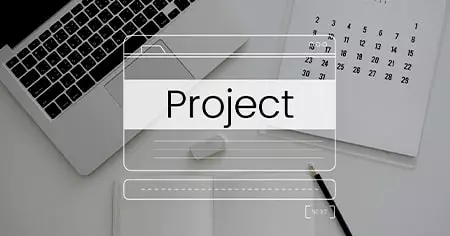
The scale of your project is one of the most important aspects to consider. A large or medium-sized project will require a different technology stack than a simple task. Apart from scale, the project's complexity is critical.
2. Product Functionality and Specs
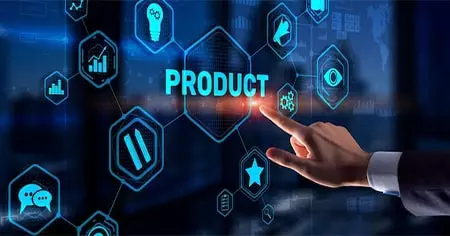
You must be sure that your outlined features will answer the challenges of your target market. It is beneficial to carry out this step following or cooperating with market research to identify. What products are available, and what features does your program need to succeed?
3. Defining the platform
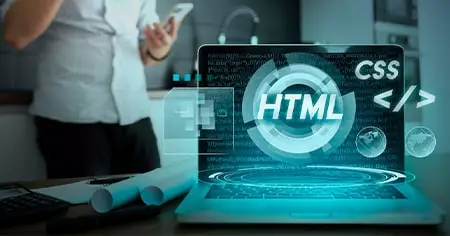
The decision should be aligned with the target users, determining native vs. cross-platform vs. web apps and the capacity to suit their unique demands. Consider tandem (side-by-side) development of various platforms while building for native platforms. While tandem development reduces time to market, lessons acquired during the test must be applied to each.
4. Scalability

Vertical scalability aids in the addition of more elements to a program. Horizontal scalability refers to the capacity to run on several devices. Both are critical to the product's growth and efficiency.
When you're ready to improve your efficiency, your tech stack should be stocked with the tools, frameworks, and components to expedite the process and save time and money.
5. Security

Not that all technologies are similarly secure. Stability is provided by mature, well-tested technologies, although all tech stacks require testing.
6. Budget

Most firms base their budget on an MVP app. They must design an original budget based on the product strategy, in-house/freelance or outsourced talent, needed infrastructure, open source versus license costs, and continuing maintenance. The budget should account for the product's expected lifespan, from creation and upkeep through final disposal.
7. Performance
Performance metrics have two sources of influence. One is a business necessity, and the other is what technology can do in a particular scenario.

Performance criteria dictate how quickly the system can reply and how many queries it can handle at what pace. Because the entire process must react to millions of events at millisecond speed, selecting the most dependable alternative is logical.
8. Skill availability
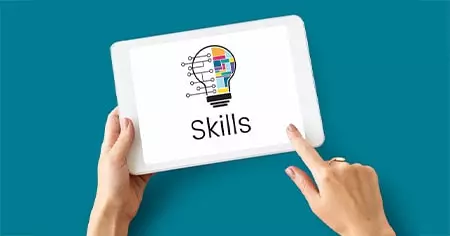
Expert availability, whether through in-house competence (and time) or hiring, frequently restricts the tech stack, especially given the IT ability gap. Rather than limiting options, leverage the knowledge of experienced product designers through outsourcing.
Conclusion
We discussed in the article how necessary it is to choose the right tech stack for your mobile and web applications. Remember to evaluate how technologies will benefit your health long-term, not just, what you are today.




